14 Jul Why Energy Management Matters
Energy management is the process of monitoring, controlling, and conserving energy in buildings or facilities. It involves optimizing energy use to reduce costs and carbon footprint while ensuring operational efficiency. Energy management is essential for businesses, schools, hospitals, and other facilities that consume large amounts of energy. With rapidly rising utility costs and increasing pressure to meet sustainability goals, energy management has become a critical aspect of facility management. Information & Energy Services, Inc. (IES) offers energy management services in a variety of settings to meet these challenges.
In this post, we will discuss why energy management matters and how it can help reduce costs, improve efficiency, and meet sustainability goals. We will also explore various aspects of energy management such as solar PV, battery energy storage systems (BESS), utility reporting and benchmarking, utility rates, project development and management, rebates, incentives, and more.
Reducing Energy Costs and Carbon Footprint
Energy management is an essential tool for businesses, schools, hospitals, and other organizations to reduce energy costs and carbon footprint. By implementing energy-efficient technologies and practices, organizations can save money on utility bills while also reducing their impact on the environment.
Energy Efficiency
One of the most important aspects of energy management is improving energy efficiency. There are many ways to improve energy efficiency in buildings, including:
- Upgrading lighting systems with LED lights
- Installing occupancy sensors to control lighting automatically
- Upgrading HVAC systems with high-efficiency equipment
- Sealing air leaks and adding insulation to reduce heating and cooling losses
- Implementing control systems for a building’s HVAC, either through a comprehensive building automation system (BAS) or a simpler method of programmable web-based thermostats depending on the type of HVAC equipment in use
Energy management can help organizations identify areas where they can improve energy efficiency and implement solutions that will reduce their overall energy consumption.
In addition to these measures, there are also many technologies available that can help organizations generate their own electricity using renewable sources like solar PV. By installing solar panels on their rooftops or in nearby fields, organizations can generate clean electricity while reducing their reliance on grid power.
Another technology that is gaining popularity is battery energy storage systems (BESS). These systems allow organizations to store excess solar power during the day and use it at night or during periods of high demand. This helps them save money by avoiding peak demand charges from utilities. In fact, some facilities may find great financial benefits by releasing this stored energy back to the grid during peak demand times using net energy metering (NEM), gaining credit through their local utilities to offset utility energy use not avoided through solar generation and batteries.
Utility Reporting and Benchmarking
Utility reporting and benchmarking are important tools for monitoring building energy use over time. By tracking utility bills and comparing them against past use and similar building benchmark data, areas of energy waste can be identified. In California, commercial facilities over 50,000 square feet require annual benchmarking through AB802, which can be completed well ahead of the State’s deadlines through ongoing utility reporting to ensure compliance.
Utility Rates
Utility rate escalations are a major concern today, particularly in California where IOUs have been increasing rates at a rapid pace. Energy management can help customers save money by identifying opportunities to reduce their overall electricity consumption or shift usage away from peak demand periods when rates are highest.
For example, an organization might implement an energy conservation program that encourages employees to turn off lights when leaving a room or unplug electronics when not in use. They might also adjust HVAC settings so that the system runs less frequently during peak demand periods.
By taking these steps, customers can significantly reduce their monthly utility bills while still maintaining comfortable working conditions for occupants.
Rebates and Incentives
Rebates and incentives are an important aspect of energy management that should not be overlooked. While California has mostly moved away from utility rebate programs, there are plenty of third-party programs available statewide which can help drive down payback periods on implementing energy efficiency projects. By taking advantage of these programs, businesses can offset some of the upfront costs associated with implementing new technologies or making upgrades to existing equipment.
Improving Operational Efficiency
Improving operational efficiency is critical for businesses looking to reduce their energy costs and carbon footprint. Energy management is an essential tool that can help organizations achieve this goal by providing valuable insights into energy use patterns, identifying areas of inefficiency, and recommending solutions to optimize resource utilization.
Project Development and Management
Energy management can play a vital role in project development and management. By analyzing energy use patterns, energy managers such as IES can identify opportunities to incorporate energy-efficient technologies in new construction or retrofit projects. These technologies can significantly reduce energy consumption while improving the overall performance of the building.
Familiarity with Building Energy Use Patterns
Energy management allows a provider like IES to become familiar with a customer building’s unique energy use patterns. IES produces monthly utility reports for our energy management customers which point out how usage shifts from month to month, along with identifying any “red flag” anomalies which could identify problems in the current building operation. This information enables businesses to take proactive measures rather than reactive ones when it comes to lowering their utility bills.
Familiarity with building energy use patterns also helps organizations identify trends over time and track progress towards sustainability goals. Regular reporting on key metrics such as total electricity consumption or greenhouse gas emissions allows companies to measure the impact of their efforts accurately.
Regulatory Compliance
Energy management can ensure regulatory requirements are being met by providing customers with the tools and information they need to monitor their energy use and identify areas where improvements can be made. Recent examples in California include annual energy benchmarking through AB802, and the new 2023 building code requiring new constructions over 3,500 square feet to include solar PV and battery storage sized to meet the load of the new construction.
By partnering with a company like IES, customers have a head start on gathering the data necessary and acting to ensure that these codes and regulations are met.
Conclusion
In conclusion, energy management is an essential tool for businesses, schools, hospitals, and other facilities to reduce their energy costs and carbon footprint. As we move towards a more sustainable future, it is crucial that we prioritize the well-being of our planet by reducing our carbon footprint. Energy management plays a critical role in achieving this goal. By implementing energy-efficient practices, organizations can do their part in creating a sustainable future while simultaneously saving money on utility bills. Contact IES today to learn about how we can conduct our energy management services at your facility!





